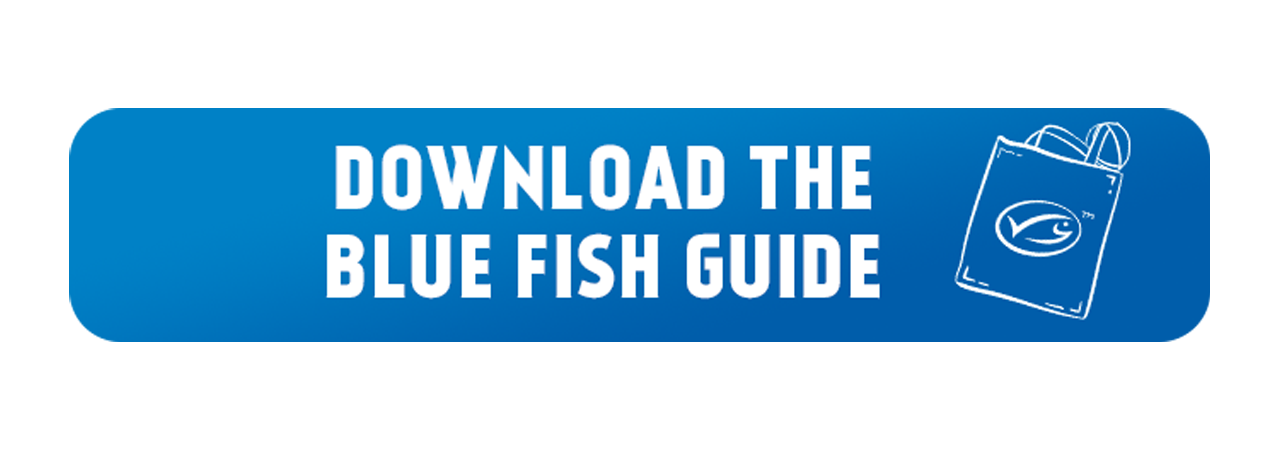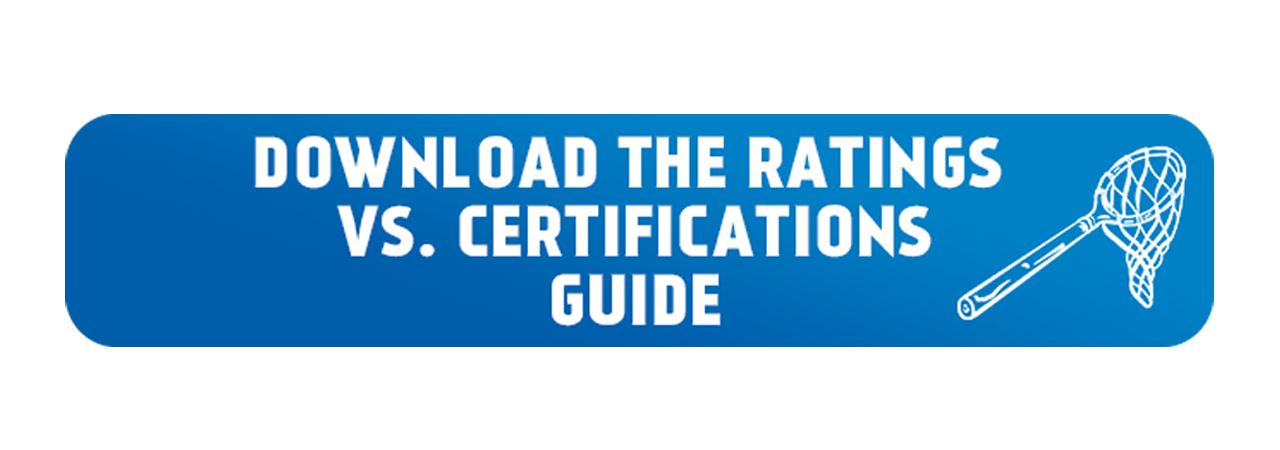You’ve landed on this page because you are a seafood eater who cares about a healthy ocean and wants to avoid contributing to the global issue of overfishing. Checking for the MSC blue fish label on seafood products is a great place to start! Let’s find out why:
What is “Sustainable Seafood”?
Although there is no one globally agreed-upon definition, the MSC standards and program are built off a specific definition. Within the MSC program, “sustainable fishing” means leaving enough fish in the ocean while also protecting marine habitats and other threatened species.
More specifically, an MSC certified fishery achieves three things:
- The seafood being caught comes from a healthy population that can reproduce for generations to come.
- The fishery has minimal impact on the surrounding marine environment and causes no lasting damage.
- The fishing is done in an area that is responsibly and effectively managed.
Visit the "Sustainable Fishing" Webpage to Learn More

What is the MSC Blue Fish Label?

Each product featuring the MSC blue fish label (pictured above) is:
- Sustainably Sourced – The stocks are fished in a way that does not threaten the population's long-term health and minimizes the damaging effects of fishing to the surrounding wildlife and ecosystem.
- Verified – You can feel confident that it is sourced from a fishery that is certified sustainable to the MSC Fisheries Standard.
- Wild-Caught – The seafood you’re consuming comes from the ocean, lakes, or rivers from wild populations.

Can I Trust the MSC Blue Fish Label?
To be sold with the MSC blue fish label, seafood must come from a fishery certified against a strict set of science-based criteria that verifies how sustainable and ocean-friendly a fishery is (commonly called the MSC Fisheries Standard).
The MSC Fisheries Standard is developed in partnership with a wide range of top experts in their respective fields, including scientists, the fishing industry, conservation groups, and others. There are several fail-safes in place—including mandatory third-party accreditation and annual audits—to ensure that the process is impartial and fair and to verify that the system works.
In short, you can feel confident trusting the MSC blue fish label.
How the MSC meets global best practice

Where Can I Buy Certified Sustainable Seafood Near Me?
The MSC blue fish label is likely hiding in plain sight in your local grocery store–once you see it for the first time, you might start noticing it on a wide variety of products!
While shopping, look for the MSC blue fish label on items in...
- ...The frozen food aisle
- ...The chilled and refrigerated goods section
- ...The fresh seafood counter
- ...The dietary supplements aisle or health and wellness section
- ...The pet aisle (because our pets deserve to be conscious consumers, too!)
Don’t forget to look for it on restaurant menus, too! Find brands and retailers that sell MSC certified seafood in the US and Canada here.
Are Seafood Certifications and Ratings Different?
Seafood certifications and ratings programs are two ways for consumers to make ocean-friendly choices when buying fish and other seafood products.
Both serve an important role in keeping the seafood supply chain accountable and encouraging seafood producers to make continuous improvements to support a healthier ocean for this and future generations.
Seafood certifications and ratings are independent from seafood brands, retailers, and restaurants, and give consumers third-party assurance that they’re supporting a healthier ocean for the future.

Here is a checklist you can follow when shopping for seafood or ordering fish at your favorite restaurant:
- Does the store/restaurant sell sustainable seafood? - You might be surprised to see fish and seafood from an MSC certified fishery hiding in plain sight. Bonus: if a store or restaurant isn’t serving sustainable seafood yet, your question could inspire them to source it!
- Does this product have a certification logo/label? - Look for a logo/label on product packaging or menus that indicates environmental sustainability or responsible farming from an independent organization, like the MSC blue fish label or ASC label.
- Is this seafood product rated environmentally friendly? - If a product does not appear to be independently certified, ratings can indicate whether your choice is generally ocean-friendly. For example, Seafood Watch ratings show you which species are “Best Choice”, “Good Alternative” and which you should “Avoid” according to environmental indicators for global stock levels. Please note these recommendations are made at a global level and cannot be applied to specific fish stocks, unlike certifications.
What Else Can I Do to Protect the Ocean?
Are you a pro at finding MSC certified seafood while grocery shopping or eating out? Congratulations! Each time you make the switch to an MSC certified option, you’re supporting sustainable fishing and doing your part to end overfishing. Looking to take further action to make our ocean healthier?
While the MSC is dedicated to ending overfishing, we understand that there are other issues our ocean faces, including pollution and climate change. Explore the five simple actions you can take—starting today—to live a more ocean-friendly life.







